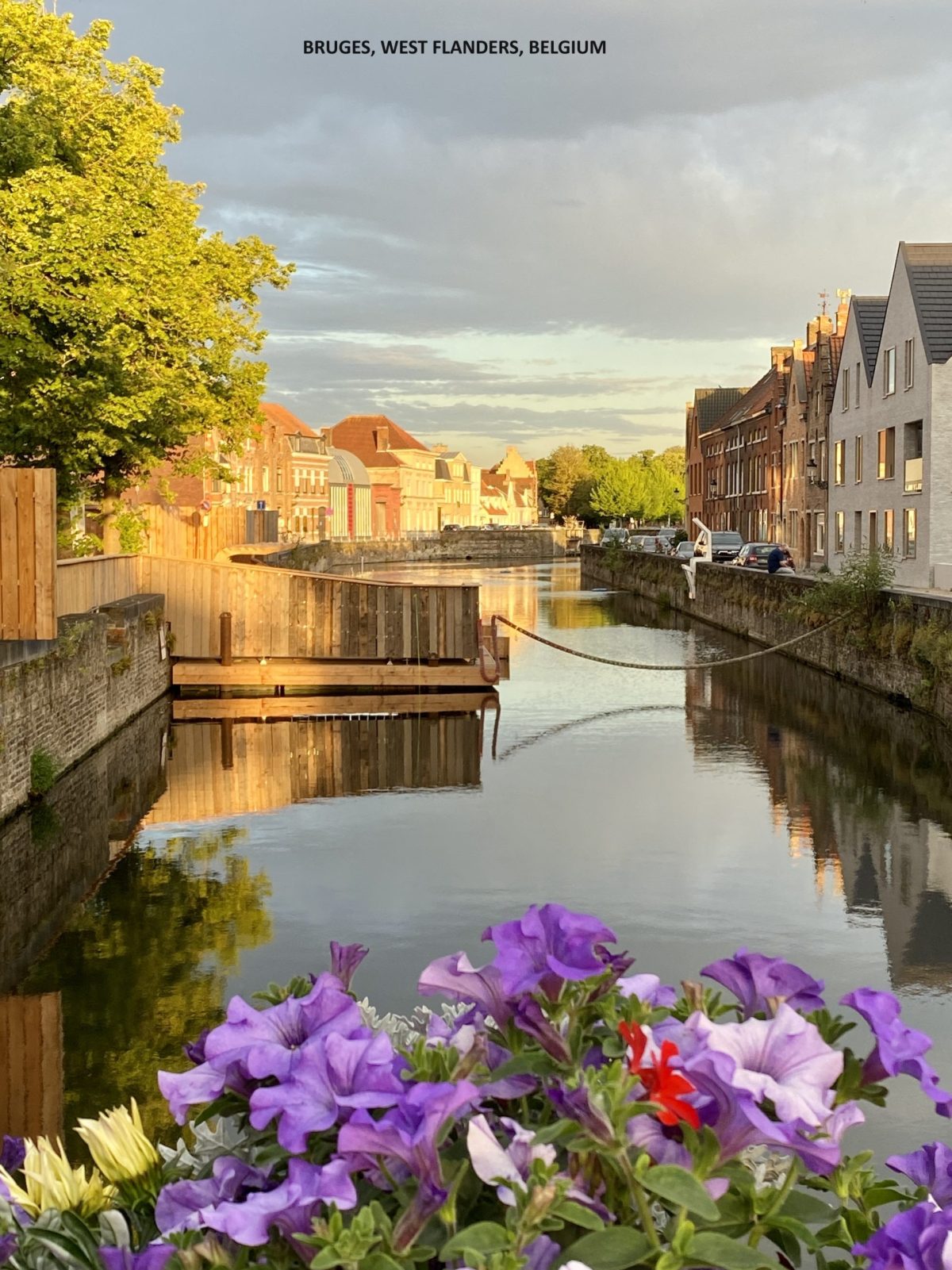We spent the morning of this our 6th day of Tour 9 in Candes Saint Martin. We had promised to return to Candes to visit the Street Art Parc which is located in the grounds of Chateau Candes. We’re so glad we returned for that visit; it was one and a half hours of pure joy. I have described the visit in a post script to the earlier Candes Saint Martin blog. For now, I will concentrate on the afternoon’s excursion to the little village of Fontevraud L’Abbaye.
Fontevraud is almost exactly 3 miles south of Montsoreau and the walk took about an hour and a quarter. Vanya chose to stay in Montsoreau with the dogs, both of which were totally exhausted after the morning’s visit to Candes. Vanya might have been a little tired too but she is recovering from her hip operation.
Although it has a population of a little over 1,500, there’s not a great deal to the village. Almost everything in Fontevraud is about the Historic Monument and UNESCO World Heritage Site of the ‘Royal Abbey of Our Lady of Fontevraud’ and so, after a very quick scout of the village which saw me find a suitable cafe-bar for a wine stop before my return to Montsoreau, I headed for the Abbey.


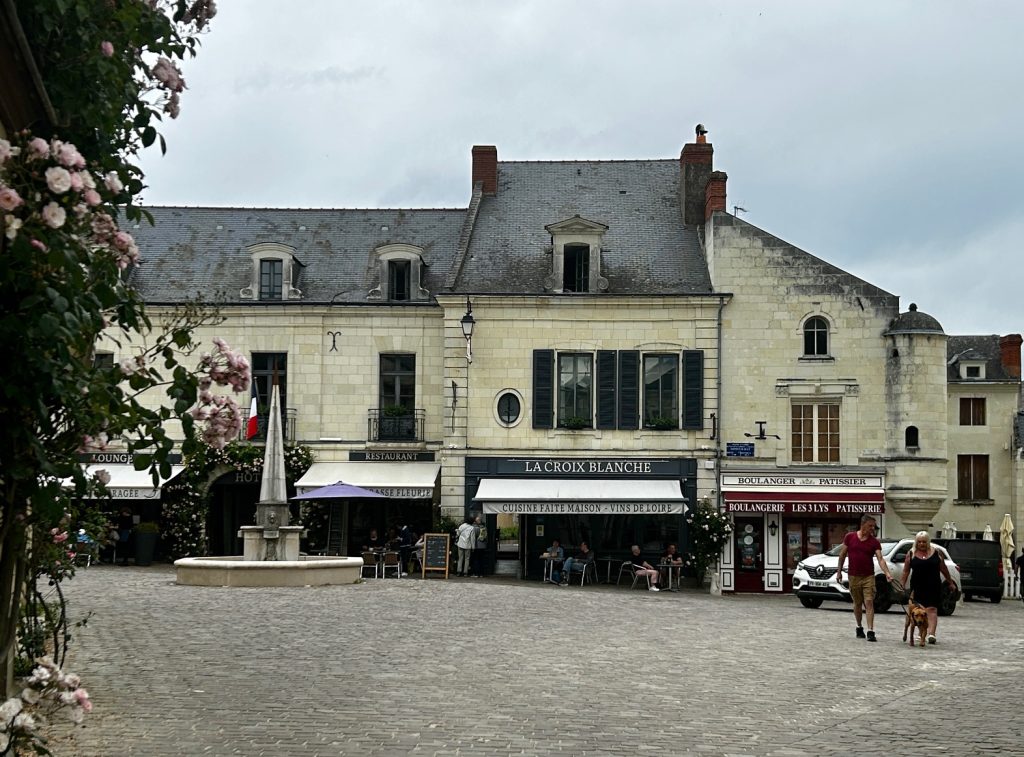
Most conveniently, the principal entrance to the Royal Abbey of Fontevraud is on the Place des Plantagenets. I paid my entrance fee (14 Euros for access into both the abbey and the museum) and began my tour. For a small fee you can join a guided tour but it really isn’t necessary if you speak French or English. You get a free guidebook (pamphlet) with your admission ticket which when read in conjunction with small plaques dotted about the Abbey explains all you need to know.
The Abbey was founded in 1101 by Robert d’Arbrissel to accommodate monks and nuns and it flourished, particularly after Eleanor of Aquitaine retired to the Abbey in 1200 and made it a necropolis for the Kings and Queens of England. Upon her death in 1204 she was entombed in the abbey church of Fontevraud together with her husband King Henry II, her third son King Richard I (aka Richard the Lionheart) and Isabella Angouleme wife of her youngest son King John of England.

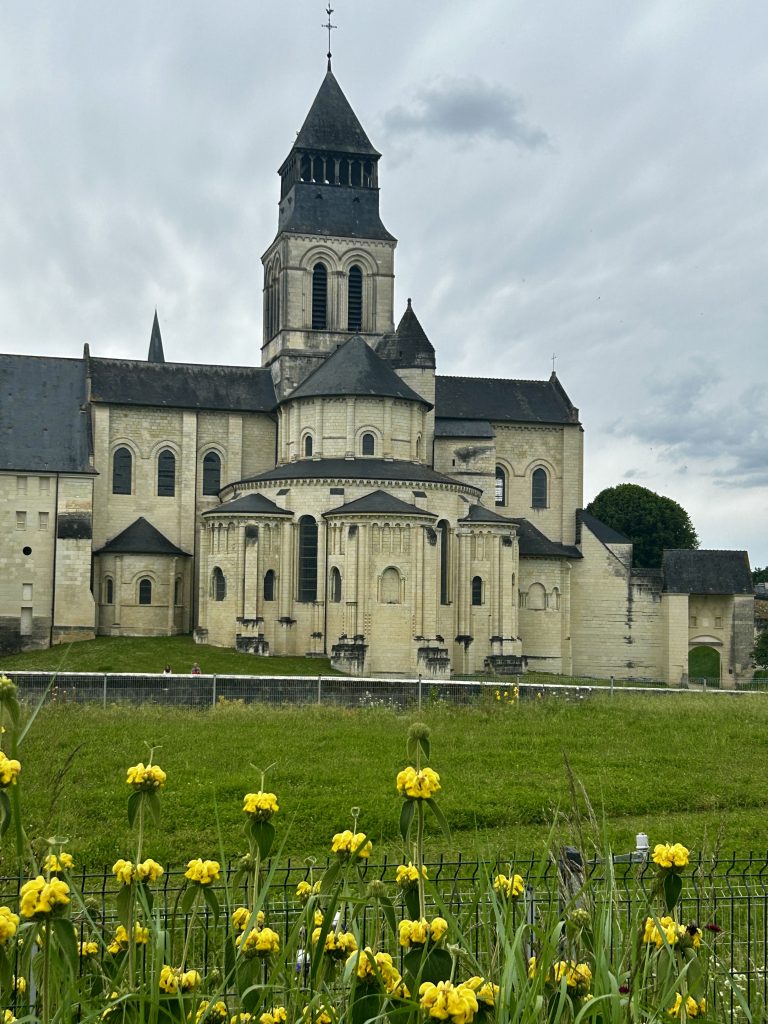
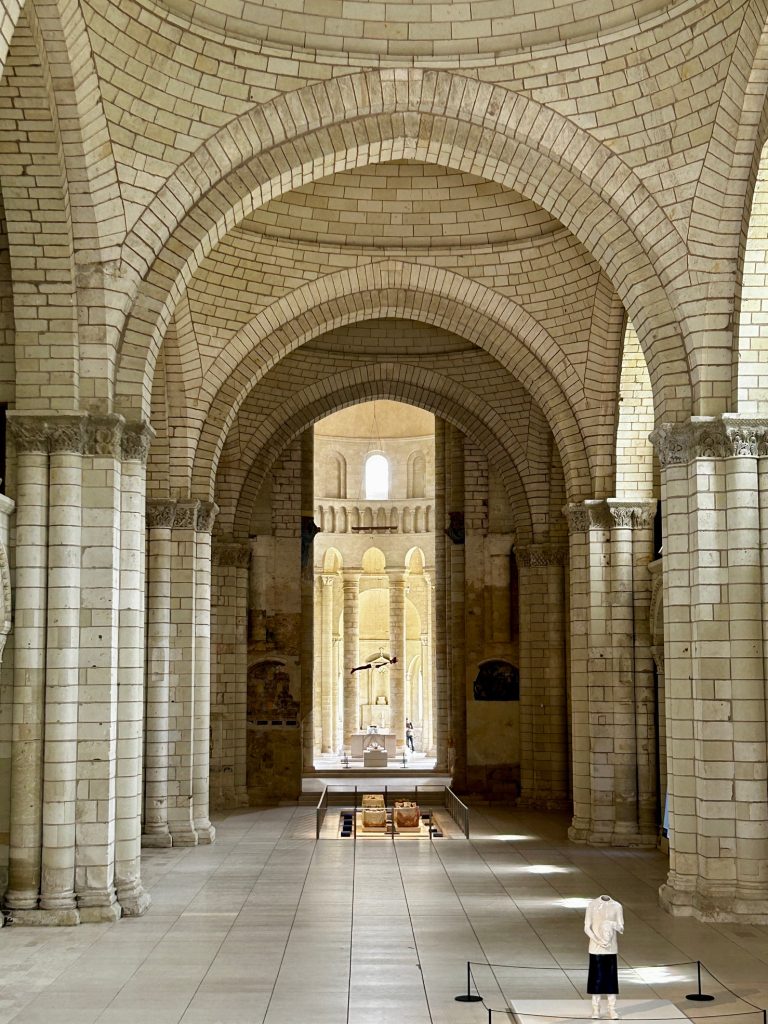
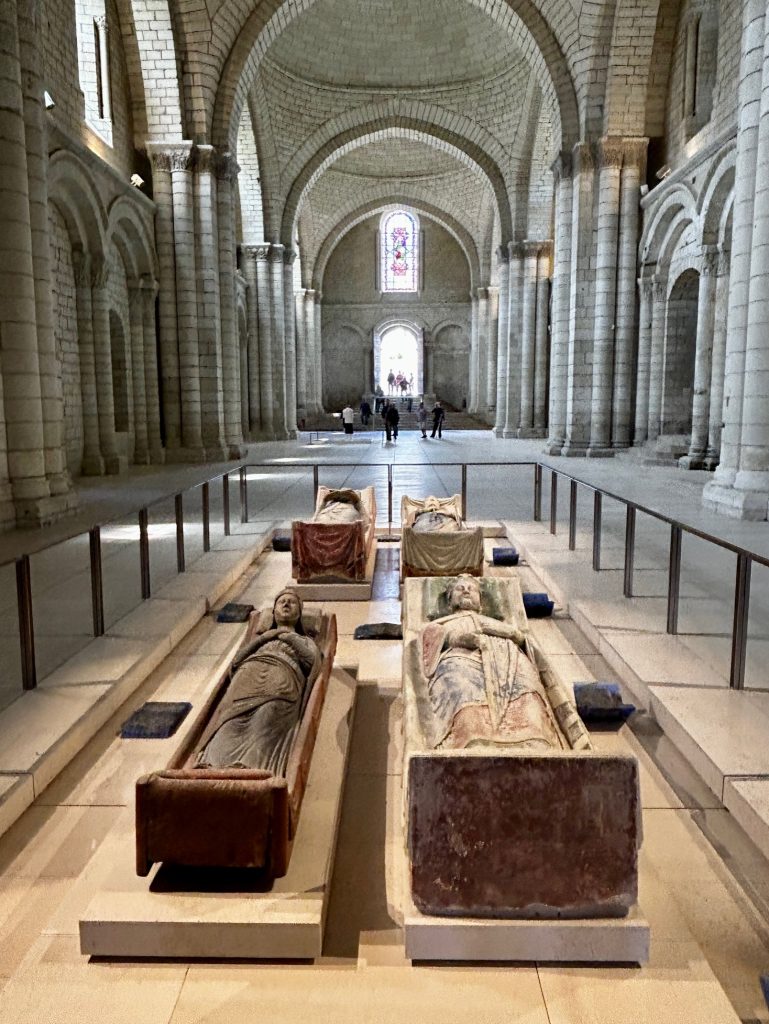
Robert d’Arbrissel is also entombed in the abbey church despite his wish to be buried in a more simple plot in the grounds of the abbey. Over the course of his life Robert proved to be a bit of a religious radical and this continued right to the end when on his deathbed he decreed that a woman, Hersende of Champagne, should succeed him as head of Fontevraud over all nuns and monks. Since then 36 abbesses have succeeded one another, the last being Julie Sophie Charlotte de Pardaillan d’Antin who was evicted during the French Revolution in 1792 and subsequently died in poverty in Paris.
The abbey was looted and ransacked during the French Revolution and suffered further depradation in 1804 when Napoleon Bonaparte instructed that it be used as a prison. Housing up to 2,000 inmates at a time until it’s closure in 1963, Fontevraud was considered one of the toughest prisons in France. After the prison closed work began to restore the Abbey and the following photos reflect some considerable progress:-
The Grand-Moutier Cloister…


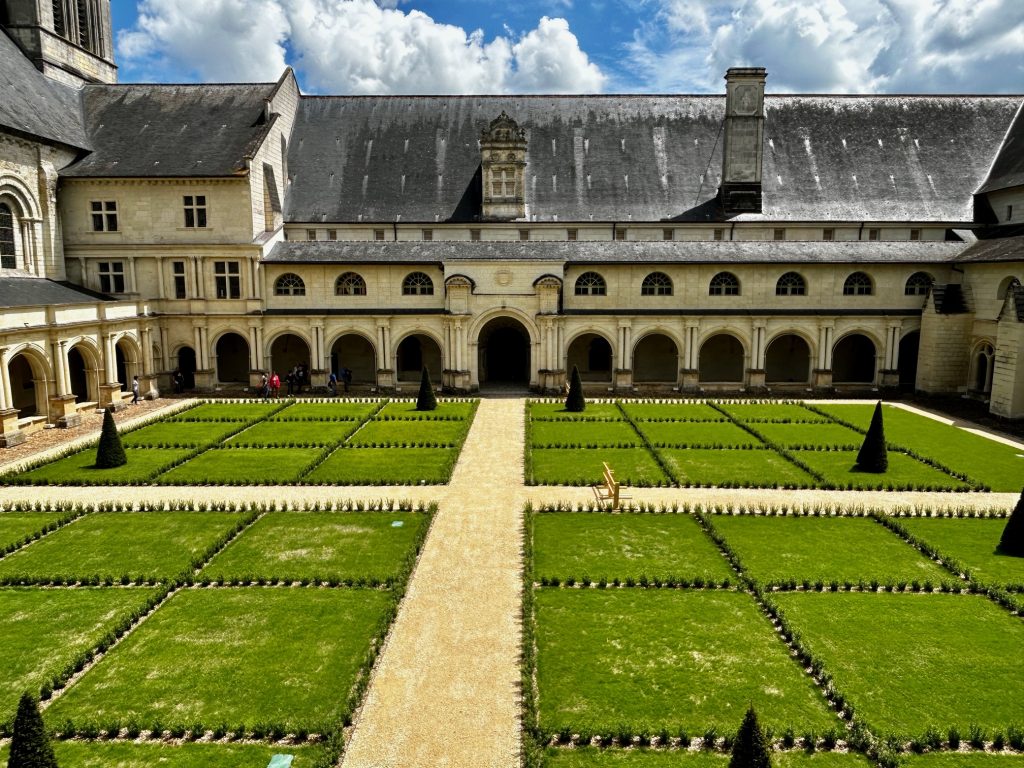
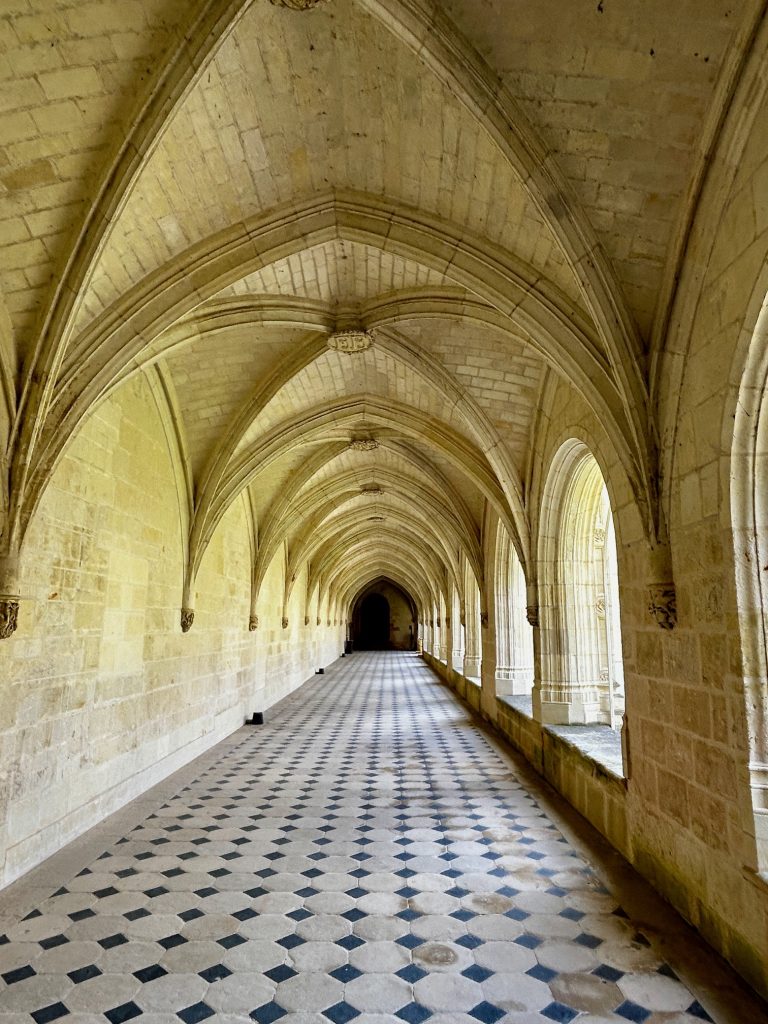

The Chapter Room…
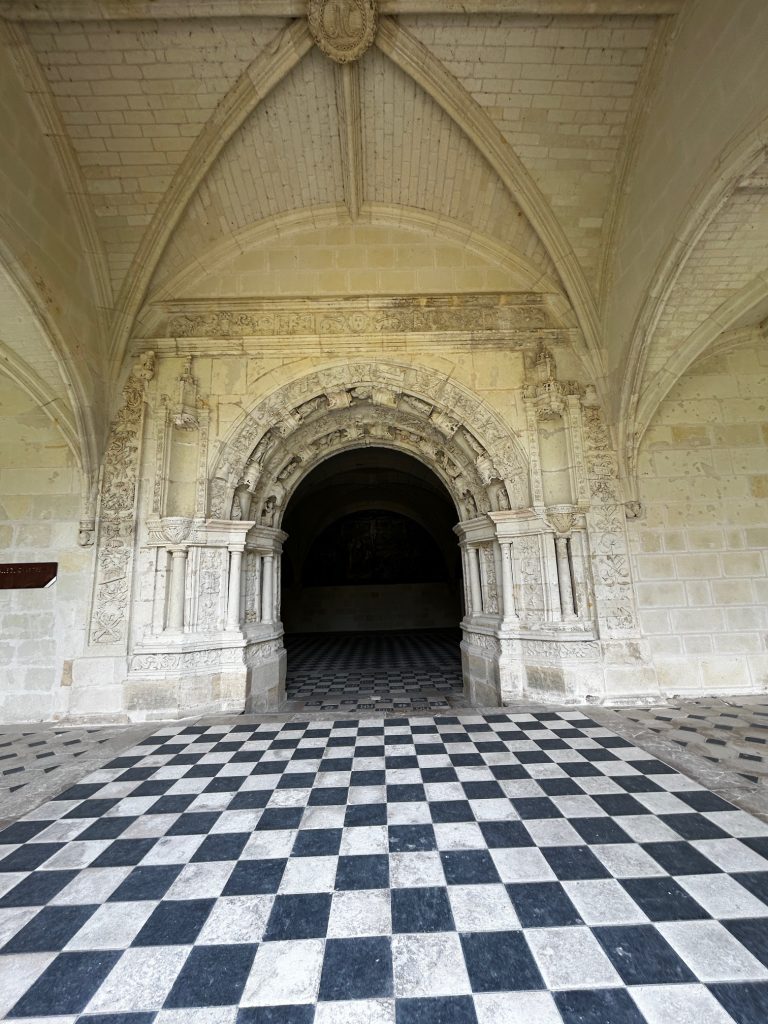
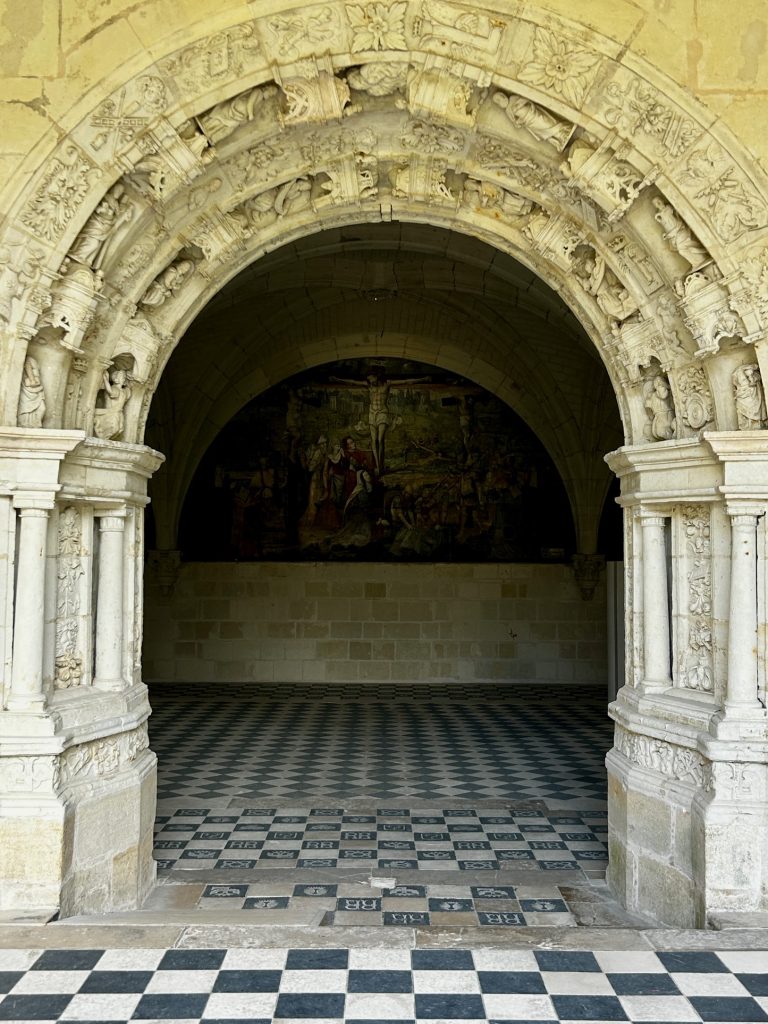



Saint Benoit Courtyard…
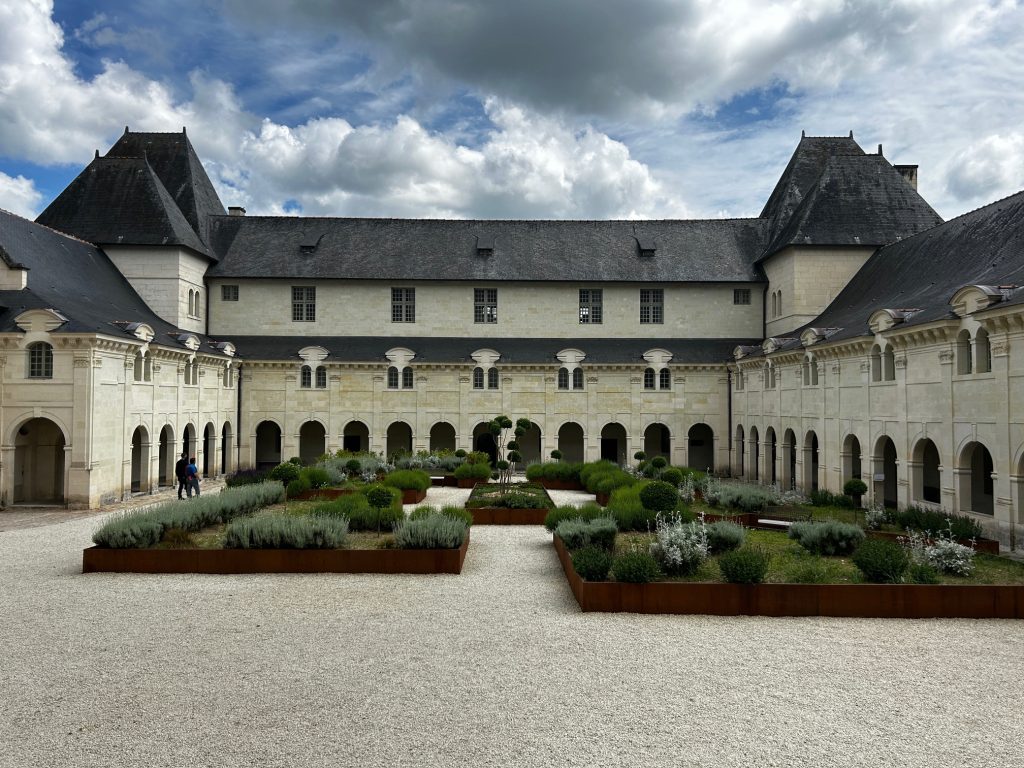
The Romanesque Kitchens…
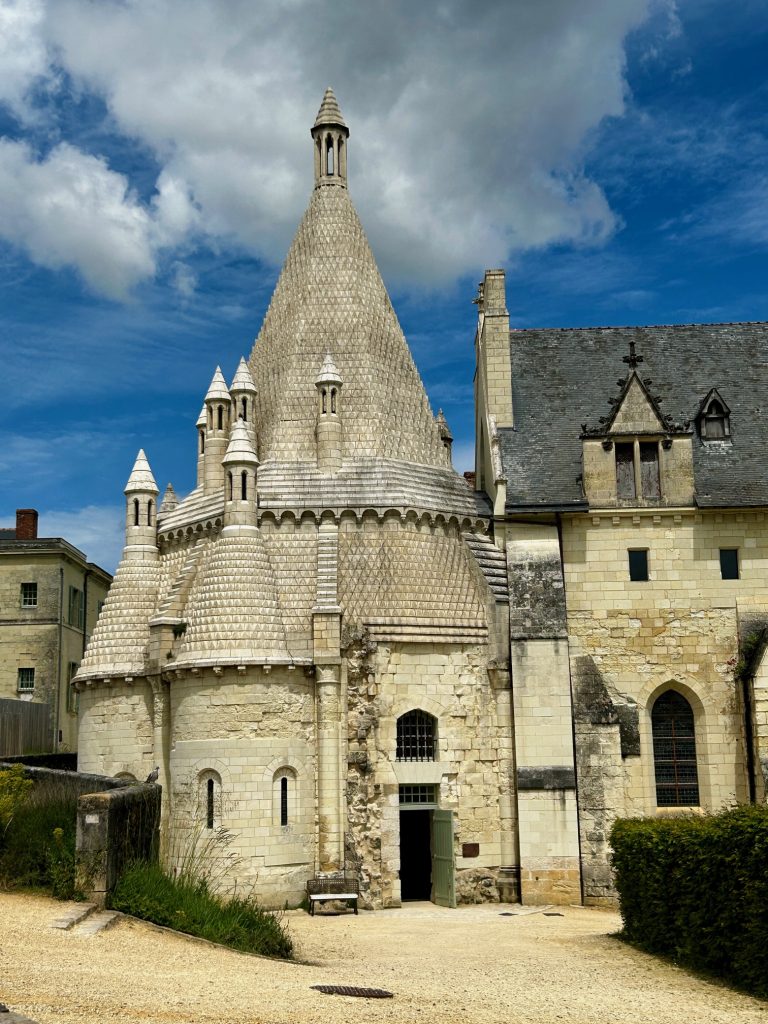


View of Fontevraud Abbey from Robert d’Arbrissel Hill (& the abbey bells)…

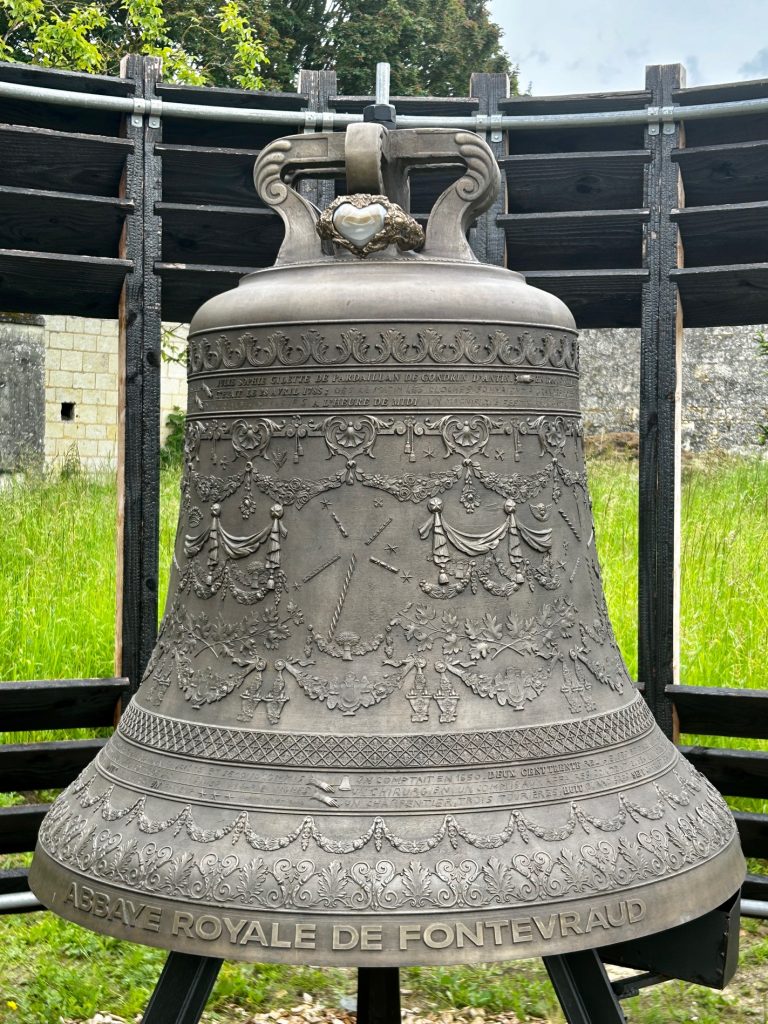


There’s no doubt, the abbey is a beautiful and interesting place (and I’m glad I visited) but in one respect it proved a disappointment. It struck me as a barren collection of pretty buildings with no ‘feeling’, if that is the right word. This may in part be due to all original furnishings, fixtures and fittings having been removed; those little items which would give the place a more human connection. I think this needs to be addressed given (a) the abbey’s history as a place monastic life and worship and; (b) it’s royal patronage (not just by the Plantagenents either) and; (c) the hardship and suffering that occured within during the period it was a notorious prison and; (d) more recently when, during World War II, it was used by the Nazi occupiers as a place of internment and execution of the French Resistance Movement. Give the place some soul.
And moving on… there was just enough time for a quick artisanal beer in the abbey’s old vegetable garden before I made my way to the museum (that was a total disappointment) and then on to my planned winestop at La Croix Blanche. I still had the three mile walk back to Montsoreau to navigate.

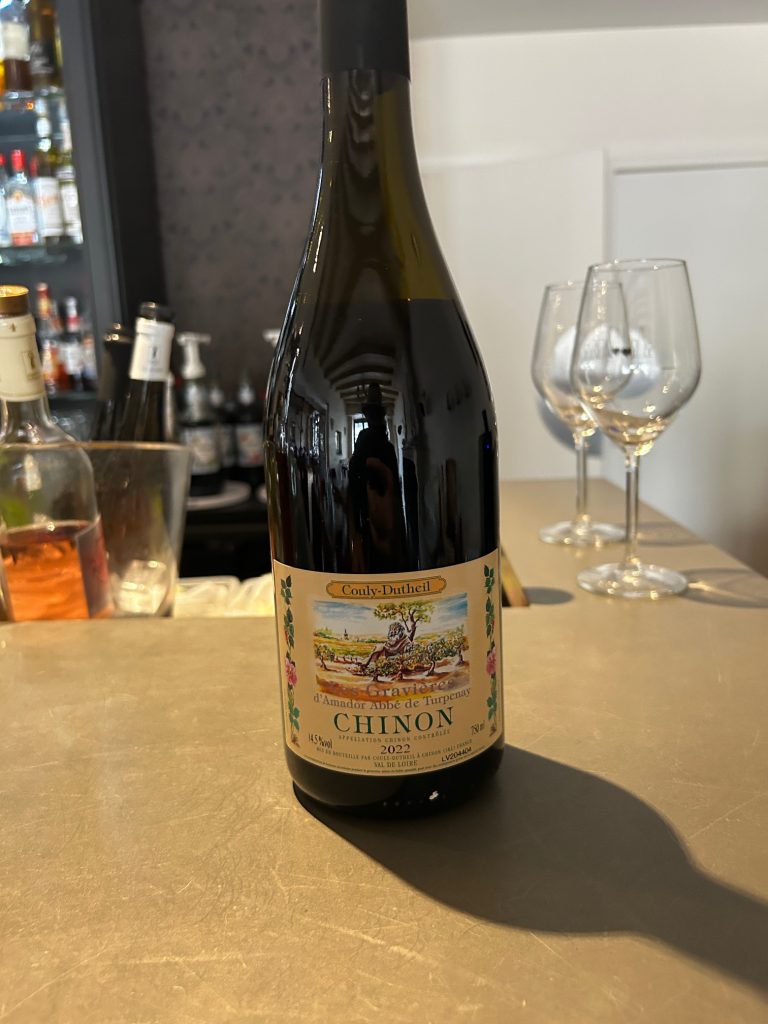
The Chinon wine was very nice. Full bodied and very smooth. I’ll be taking some of that back to England.

